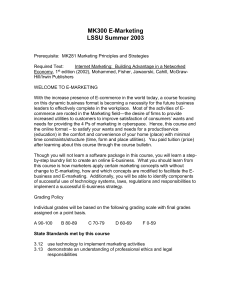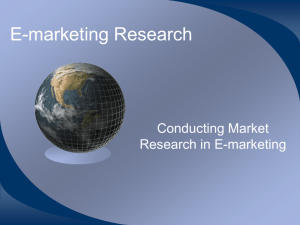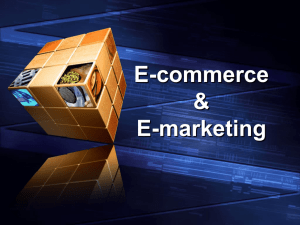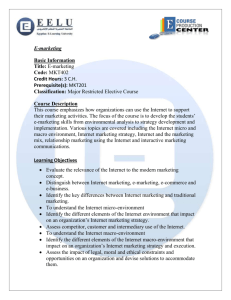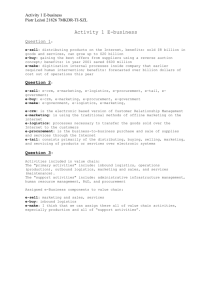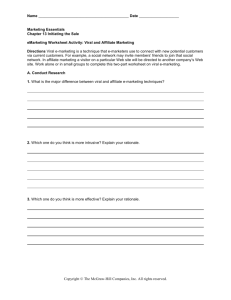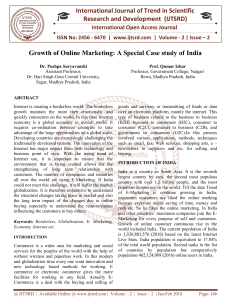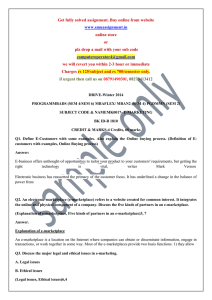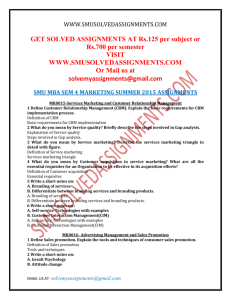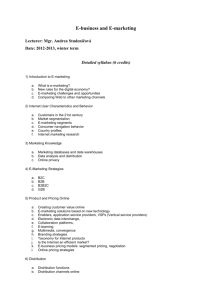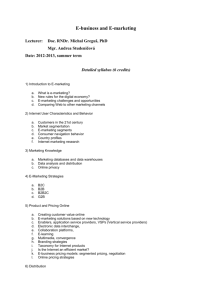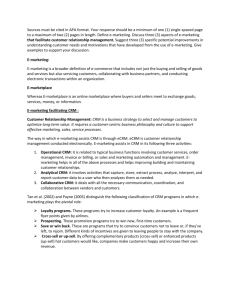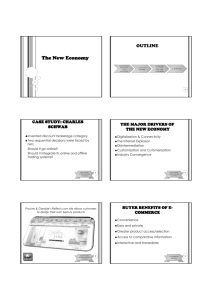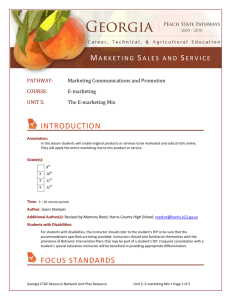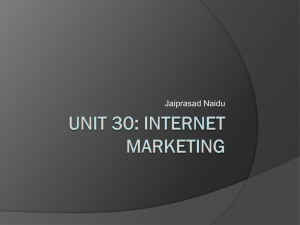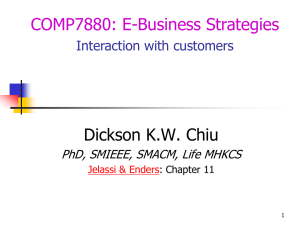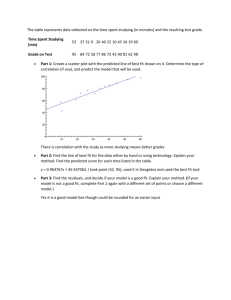Chapter 8 E
advertisement
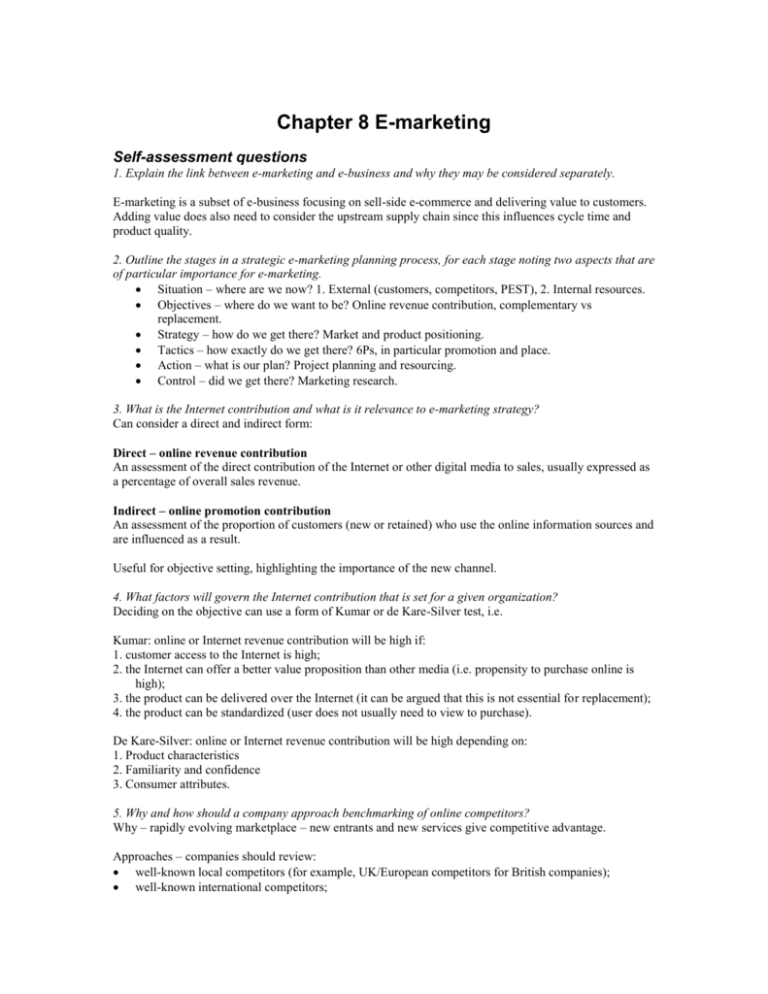
Chapter 8 E-marketing Self-assessment questions 1. Explain the link between e-marketing and e-business and why they may be considered separately. E-marketing is a subset of e-business focusing on sell-side e-commerce and delivering value to customers. Adding value does also need to consider the upstream supply chain since this influences cycle time and product quality. 2. Outline the stages in a strategic e-marketing planning process, for each stage noting two aspects that are of particular importance for e-marketing. Situation – where are we now? 1. External (customers, competitors, PEST), 2. Internal resources. Objectives – where do we want to be? Online revenue contribution, complementary vs replacement. Strategy – how do we get there? Market and product positioning. Tactics – how exactly do we get there? 6Ps, in particular promotion and place. Action – what is our plan? Project planning and resourcing. Control – did we get there? Marketing research. 3. What is the Internet contribution and what is it relevance to e-marketing strategy? Can consider a direct and indirect form: Direct – online revenue contribution An assessment of the direct contribution of the Internet or other digital media to sales, usually expressed as a percentage of overall sales revenue. Indirect – online promotion contribution An assessment of the proportion of customers (new or retained) who use the online information sources and are influenced as a result. Useful for objective setting, highlighting the importance of the new channel. 4. What factors will govern the Internet contribution that is set for a given organization? Deciding on the objective can use a form of Kumar or de Kare-Silver test, i.e. Kumar: online or Internet revenue contribution will be high if: 1. customer access to the Internet is high; 2. the Internet can offer a better value proposition than other media (i.e. propensity to purchase online is high); 3. the product can be delivered over the Internet (it can be argued that this is not essential for replacement); 4. the product can be standardized (user does not usually need to view to purchase). De Kare-Silver: online or Internet revenue contribution will be high depending on: 1. Product characteristics 2. Familiarity and confidence 3. Consumer attributes. 5. Why and how should a company approach benchmarking of online competitors? Why – rapidly evolving marketplace – new entrants and new services give competitive advantage. Approaches – companies should review: well-known local competitors (for example, UK/European competitors for British companies); well-known international competitors; new Internet companies local and worldwide (within sector and out of sector). Can use three-criteria test: 1. Business effectiveness (online revenue, profitability). 2. Marketing effectiveness. Outcomes such as leads and sales will also be reviewed. 3. Internet effectiveness. Effectiveness of web site as a communications tool. 6. Describe what is meant by a complementary and replacement Internet channel strategy and give examples of products for which companies follow a particular approach. Complementary – Internet is additional channel, but less significant than others – high-value products and services with complex buying decision or strong channel. Replacement – Internet becomes main channel to market for sales and support – typically lowervalue product, or straightforward buying decision (commodities). 7. Summarize new opportunities to vary the marketing mix that arise through deploying the Internet. Use 6Ps as framework: Product (new digital products and value-adds) Price (price reduction, new pricing models) Place (new representation on intermediaries, direct selling) Promotion (integration of online and offline techniques) People, Processes and Physical evidence (new forms of service delivery). 8. How can online and offline techniques be used in the control stage of strategy? This question is about marketing research aspect of control. Refer to p. 507. Online techniques – server log file analysis, pop-up surveys, e-mail audits. Offline techniques – traditional surveys of customer service.

